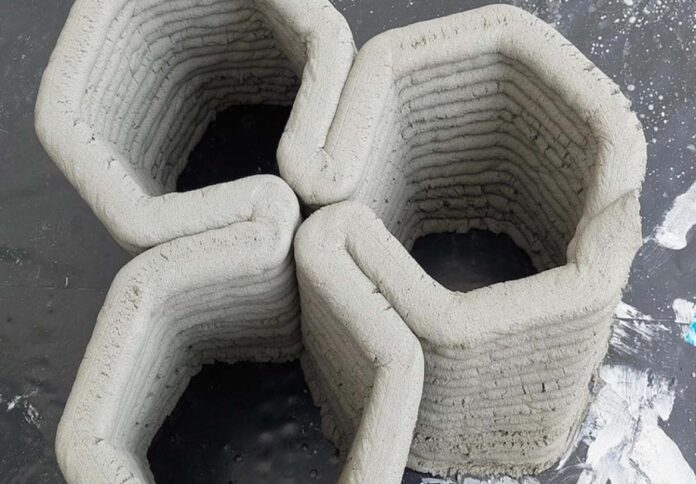
Engineers from RMIT University and the University of Melbourne have conducted research, introducing graphene oxide into 3D-printed concrete to enhance strength and printability.
The study explores the potential of creating ‘smart’ concrete structures capable of monitoring cracks and structural changes, RMIT said in a news release.
The research, led by RMIT Associate Professor Jonathan Tran and PhD candidate Junli Liu, marks the first comprehensive investigation into the impact of graphene oxide on the compressive properties and printability of 3D-printed concrete.
Graphene oxide, a nanomaterial commonly utilised in batteries and electronic devices, was found to not only increase the strength of concrete by up to 10 per cent but also impart electrical conductivity to the material.
One of the key breakthroughs is the prospect of constructing ‘smart’ buildings equipped with walls that function as sensors, detecting and monitoring even minute cracks.
Current methods for crack detection, such as ultrasonic or acoustic sensors, are effective for large cracks but face challenges in identifying smaller cracks early on.
The addition of graphene oxide introduces the possibility of an electrical circuit within concrete structures, enabling the detection of structural issues, temperature variations, and other environmental factors.
Professor Tran highlighted the potential impact of this technology on the construction industry, underscoring the advantages over traditional formwork methods.
“With 3D printed concrete, not only does it help save time, money and labour, but you can also create more complex structures and reuse some construction waste in cement-based materials,” he explained.
While the study demonstrates promising results, Tran emphasised the need for further research to determine if concrete with graphene oxide can match or surpass the strength of conventionally cast concrete.
The team also observed that the addition of too much graphene oxide could impact the concrete’s flow and disrupt its balance, potentially compromising printability, strength, and durability.
Lead researcher Junli Liu noted that the strength of the concrete could be optimised by improving the bond between graphene oxide and the concrete mixture.
The research tested different dosages of graphene oxide and found that a lower dosage (0.015% of the weight of cement) exhibited greater strength than a higher one (0.03% of the weight of cement).
The next phase of the research will delve into studying the electrical conductivity of graphene oxide in concrete and assessing its viability as a smart material.
The findings were published in the journal, Additive Manufacturing Letters.




















